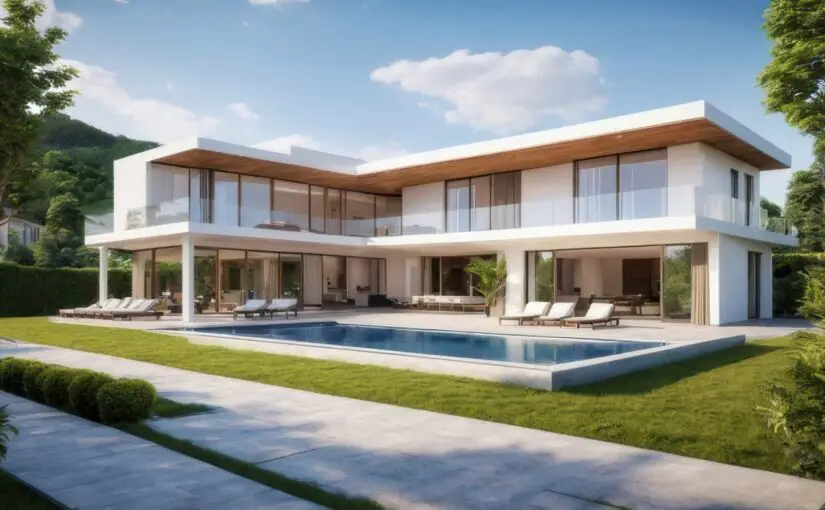The field of residential architecture is undergoing a profound transformation. As societal needs, technological advancements, and environmental considerations continue to evolve, so too do the design trends that shape our homes. In this article, we will explore the key trends that are revolutionizing architect and design, illustrating how these innovations are shaping the homes of tomorrow.
Sustainability: A Central Pillar of Modern Design
One of the most significant changes in residential architecture over the past few years has been the increasing emphasis on sustainability. Homebuyers and designers alike are becoming more conscious of their environmental footprint, and this is reflected in the design of homes.
Green Building Materials
Homeowners are increasingly opting for eco-friendly materials that not only reduce the carbon footprint but also enhance the longevity and energy efficiency of a home. Materials like bamboo flooring, recycled steel, and low-VOC (volatile organic compounds) paints are gaining traction in residential construction. These materials help create healthier living environments while reducing the environmental impact.
Energy Efficiency & Renewable Energy Integration
Energy-efficient homes are no longer a luxury; they have become a necessity. The integration of solar panels, geothermal heating, and passive house techniques has become commonplace. Homes are being designed to optimize natural light, improve insulation, and reduce energy consumption. These eco-conscious designs not only lower utility bills but also contribute to a greener planet.
Technological Advancements: Smart Homes and Automation
Technology is another area where residential architecture is rapidly evolving. The concept of a “smart home” is no longer just a futuristic idea—it’s becoming an integral part of residential living.
Home Automation
From controlling the thermostat to adjusting lighting and security systems, homeowners can now manage nearly every aspect of their home through a smartphone app. Voice-controlled assistants like Amazon Alexa or Google Assistant are making it easier than ever to automate home functions, providing added convenience and efficiency.
Smart Kitchens and Bathrooms
Kitchen and bathroom design have also benefited from smart technology. In the kitchen, appliances like smart refrigerators, ovens, and dishwashers can be controlled remotely, allowing homeowners to monitor their food, manage inventory, and reduce waste. In bathrooms, features like smart mirrors, touchless faucets, and high-tech showers are elevating the level of luxury and convenience in home design.
Open Floor Plans: The Evolving Concept of Space
While open floor plans have been a dominant trend in residential architecture for the past two decades, they continue to evolve. The focus is now on creating adaptable, flexible spaces that can serve multiple functions.
Multi-Functional Spaces
Gone are the days when rooms had rigid purposes. Modern homes are designed with flexibility in mind, allowing spaces to evolve depending on the needs of the homeowner. For instance, living rooms might double as home offices or gyms. Kitchens are merging with dining rooms, creating larger, more social spaces for families to gather.
Blending Indoor and Outdoor Living
As people continue to spend more time at home, the desire to seamlessly blend indoor and outdoor spaces is growing. Large sliding glass doors, expansive patios, and outdoor kitchens are becoming standard in many new residential designs. This trend helps homeowners feel more connected to nature and provides additional living space, which is particularly valuable in smaller homes.
Minimalism and Clean Lines: A Focus on Functionality
The minimalist movement continues to influence residential architecture, with an emphasis on clean lines, open spaces, and functional design. This trend is more than just an aesthetic; it reflects a shift towards simplicity and efficiency in everyday living.
Simplified Designs with High-Quality Materials
Rather than focusing on ornate detailing, contemporary homes are embracing sleek, understated designs that prioritize high-quality materials. Natural wood, stone, and glass are often used to create simple yet striking interiors. This approach not only enhances the visual appeal of the home but also supports sustainability by incorporating durable, long-lasting materials.
Less Is More: Streamlined Interiors
Interior design in residential architecture is also shifting toward simplicity. Homeowners are opting for fewer, more meaningful possessions, and this is reflected in the design of their living spaces. Clutter-free environments, built-in storage solutions, and multi-purpose furniture are becoming integral elements of modern home design.
Wellness and Biophilic Design: Prioritizing Mental and Physical Health
In recent years, there has been a growing recognition of the connection between architecture and well-being. Biophilic design, which integrates natural elements into the built environment, is gaining popularity as homeowners seek to create spaces that promote mental and physical health.
Natural Light and Air Quality
The importance of natural light cannot be overstated. Large windows, skylights, and open floor plans are designed to maximize the amount of daylight that enters a home. Furthermore, homes are incorporating advanced ventilation systems that improve indoor air quality, ensuring that residents are breathing clean, fresh air.
Indoor Gardens and Green Spaces
Biophilic design also encourages the inclusion of plants and green spaces within the home. Indoor gardens, green walls, and plant-filled living areas are being integrated into residential designs, providing both aesthetic beauty and health benefits. These elements help reduce stress, improve air quality, and create a sense of calm.
The Future of Residential Architecture
As architectural and design trends evolve, residential homes are becoming more sustainable, technologically advanced, and attuned to the needs of the modern homeowner. From energy-efficient materials and home automation to the integration of wellness principles and biophilic design, these trends are transforming the way we live.
Looking ahead, it’s clear that residential architecture will continue to evolve in response to societal shifts, technological advancements, and a growing commitment to sustainability. Homes will become smarter, more adaptable, and increasingly aligned with the health and well-being of their inhabitants. As these trends continue to gain traction, the future of residential architecture promises to be more innovative, sustainable, and thoughtful than ever before.
